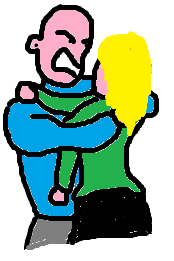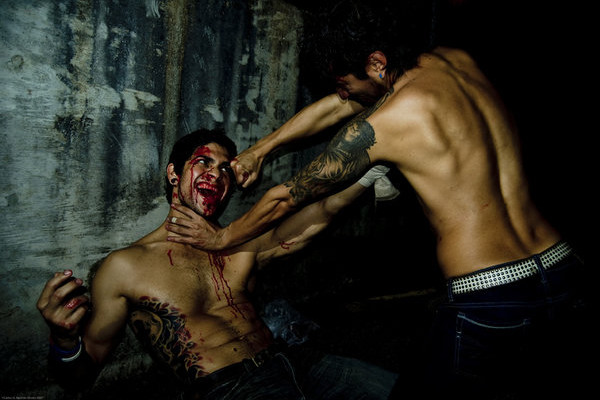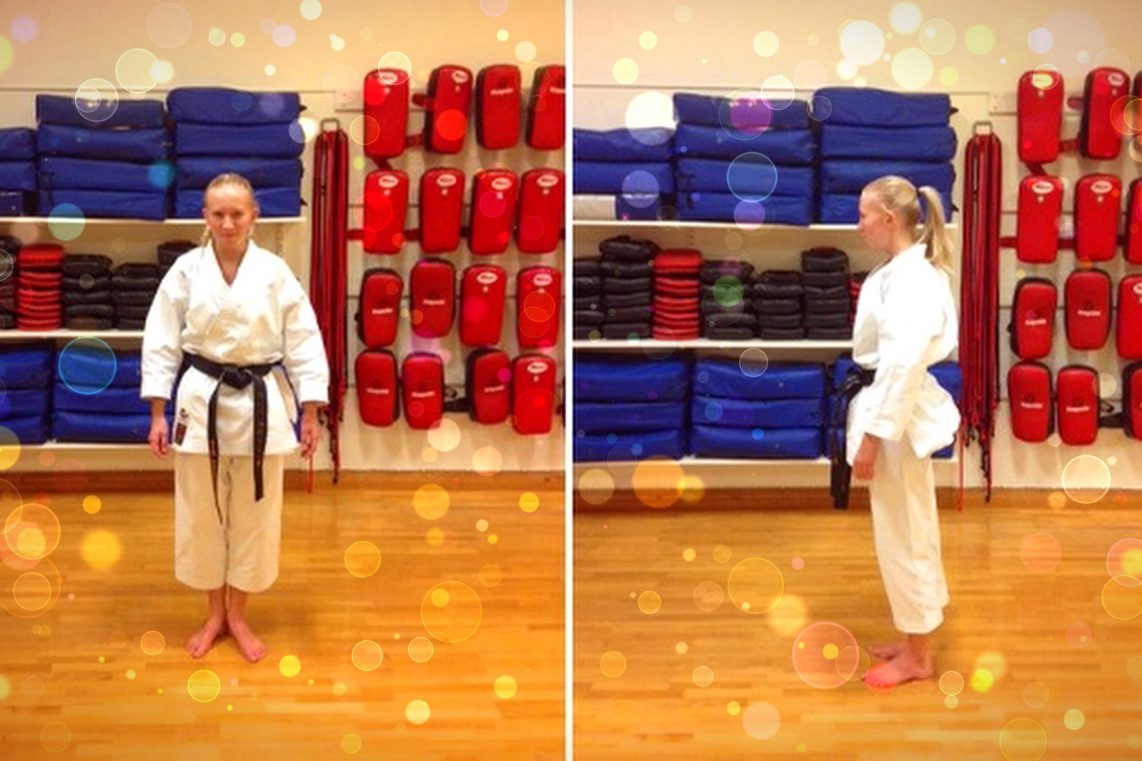A favorite expression of a well-respected Goju-ryu and Matayoshi Kobudo sensei I know in Okinawa is the following:
“Karate iz… whoore-tee-high-boo”
Meaning, Karate is forty-five.
More specifically, 45 degrees. And not like in temperature, or academic degrees (though some soke-dokeys might think so!) but in geometrical angle.
In other words, the essence of Karate is expressed in the 45 degree angle.
Sounds strange? It’s really not. If you ask me, this Okinawan sensei’s quote is a perfect example of a physical/technical manifestation of an even more famous quote, namely “Karate ni sente nashi” (there is no initiative [commonly interpreted as first attack] in Karate).
In other words, Karate is primarily a defensive martial art. As some random master once so accurately put it; “Like a treasure, our fists remain hidden up our sleeves till someone comes looking for them.”
And when that special someone comes looking, that’s when whoore-tee-high-boo comes into play.
45.
Let’s look closer.
Combat is – in theory – chaos. Mayhem. A madhouse. So, naturally, trying to break it down and categorize it into logical forms, shapes, divions and angles (in order to gain a future combative advantage through enhanced understanding of the underlying principles of fighting) is something we humans have been doing ever since the first caveman picked his nose.
From this continuous study into the evolutionary process of the martial arts, many simple conclusions can be drawn about what seems to universally work well across different cultures and their respective indigenous combative systems or traditions. Not necessarily in the mere physical sense though (as in observing and comparing different strikes, punches, blocks, stances and so on), but more in the actual theory and principle behind why certain specific defensive templates and techniques have survived till today.
Enter 45.

(that totally sounds like a hot nightclub by the way…)
Forty-five degrees is an angle so crucial to every martial art in existance (chiefly the defensive ones like Karate) that thoroughly understanding it, along with its practical applications and “cousin angles”, is virtually a golden ticket to becoming what most people would consider a “master” of the art.
That should say something about the importance, as well as the difficulty, in understanding the principles and applications of combative angles.
(Which is not to denigrate having knowledge of stuff like the location, tool, direction, amount of applied force et cetera in the techniques of any given situation – along with understanding the general characteristics of the anatomical struture(s) you are attacking/defending).
So… with those words being there, let me just briefly give you the very basics of how the 45 degree angle fits into Karate.
Great.
Do a block.
Any.
Gedan barai, jodan uke, yoko uke, uchi uke… whatever you call it, however it looks, it is based upon the precept of 45 degrees. Why? Because if it wasn’t, it would not exist. Because this is the angle of deflection and evasion.
Of sneakiness.
Here’s actually a great test you can do: With a partner standing in front of you, place your arm in a 45 degree position diagonally over his/her chest and neck. You should have a 45 degree angle in the crook of your elbow, as well as in your armpit. Then, have your partner grab a hold of you (front bearhug) and just try to squeeze you together.

Your job is simply to hold him/her away with the arm that is between you.
Pay attention to the angles.
The truth is, when you partner starts to squeeze you, as soon as you get under 45 degrees you will collapse.
To make it even more epicer, (yes, epicer) try the same with 90 degree angles… and feel the difference.
Pure epicness.
This exercise is very simple, but teaches many valuable lessons.
One of the biggest being; force must never be met head on, but deflected and spread out (and subsequently taken advantage of). And believe me, this is but one of the many purpose of utilizing 45 degree angles in combat. Moreover, using the principle of 45 degrees makes even a very small person capable of standing a chance against someone big, assuming she knows her angles, so to speak…
… and isn’t that one of our main selling points when we market Karate anyway?
(Which just made me think of some certain schools of Kobudo, where banging each others weapons straight on is considered “correct”, and displaying a broken kumite staff is even something to take “pride” in. That’s like celebrating successful weight-loss by eating a big fat cake! Double u. Tee. Eff?)
Using 45 degrees of deflection is immensely important. Especially in tai-sabaki (usually translated as body movement), ashi-sabaki (feet movement), or tenshin (body turn) not to mention the aikido terms tenkai or tenkan (lit. revolve/interchange).
I think Mr. Jigoro Kano, legendary founder of Judo, said it best when he came up with the following metaphorical mindphuck:
Suppose we estimate the strength of a man in units of one. Let us say that the strength of your opponent is 10 units, whereas your own strength is only 7 units. Then, if he pushes you with all his force, you shall certainly be pushed back or thrown down, even if you use all your strength against him. This would happen from opposing strength to strength.
But if instead of opposing him, you leave him unresisted, moving your body just as much as he pushes, at the same time keeping your balance, he will naturally lean forward and lose his balance. In this new position, he may become weak (not in actual physical strength, but because of his new position) as to reduce his strength for the moment, say to 3 units only instead of 10 units. But meanwhile you, by keeping your position, retain your full strength, as originally represented by 7 units. Here then, you are momentarily in a superior position, and you can defeat your opponent by using only half of your strength, or 3,5 units against his 3 units!
This leaves one-half of your strength available for any other purpose. If you had greater strength than your opponent to begin with, you could of course push him back. But even if you wished to, and had the power to do so, it would still be better for you to first to give way, because by so doing, you should have greatly saved your energy and exhausted your opponent’s.”
That’s “Karate ni sente nashi” in a nutshell.
Club 45.
But don’t be fooled by the simplicity of “45”. The really hard part, as I see it, lies in understanding, and correctly applying, the connection between 45 degrees, 90 degrees (its evil step-brother) and how they ultimately merge in the circle (the father of the family).
Actually, perhaps this is best understood by examining the kote gaeshi (lit. wrist turn), one of the most common joint locks in any martial art (but most prevalent in ju-jutsu and aikido), which is literally a perfect textbook example of the both transitional and interchangeable application of the aforementioned angles. And everything in between.
However, I think I’ll save that for another post book.
Your sensei can fill you in on the rest for now.
Just remember that:
“Karate iz… whoore-tee-high-boo”



17 Comments